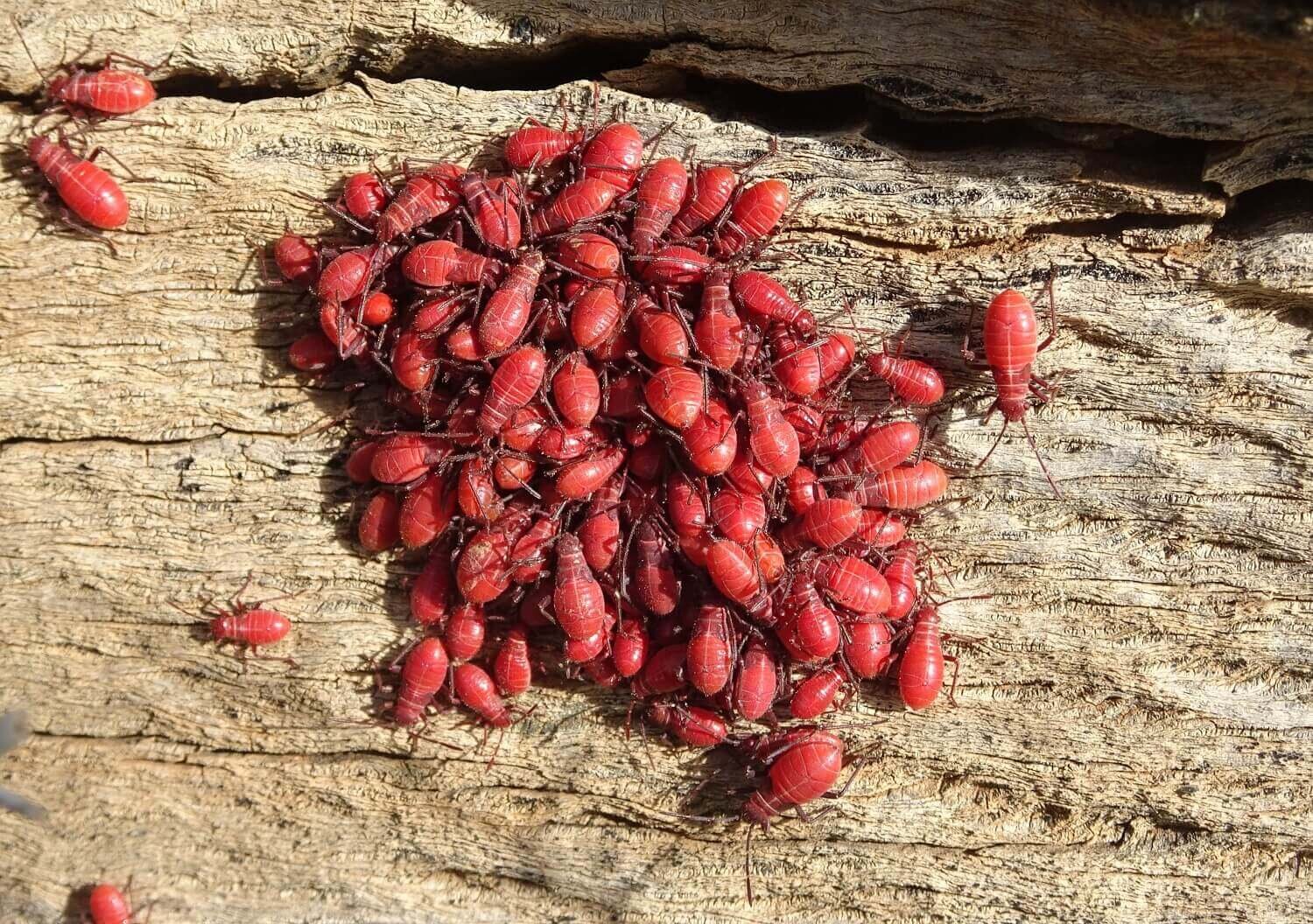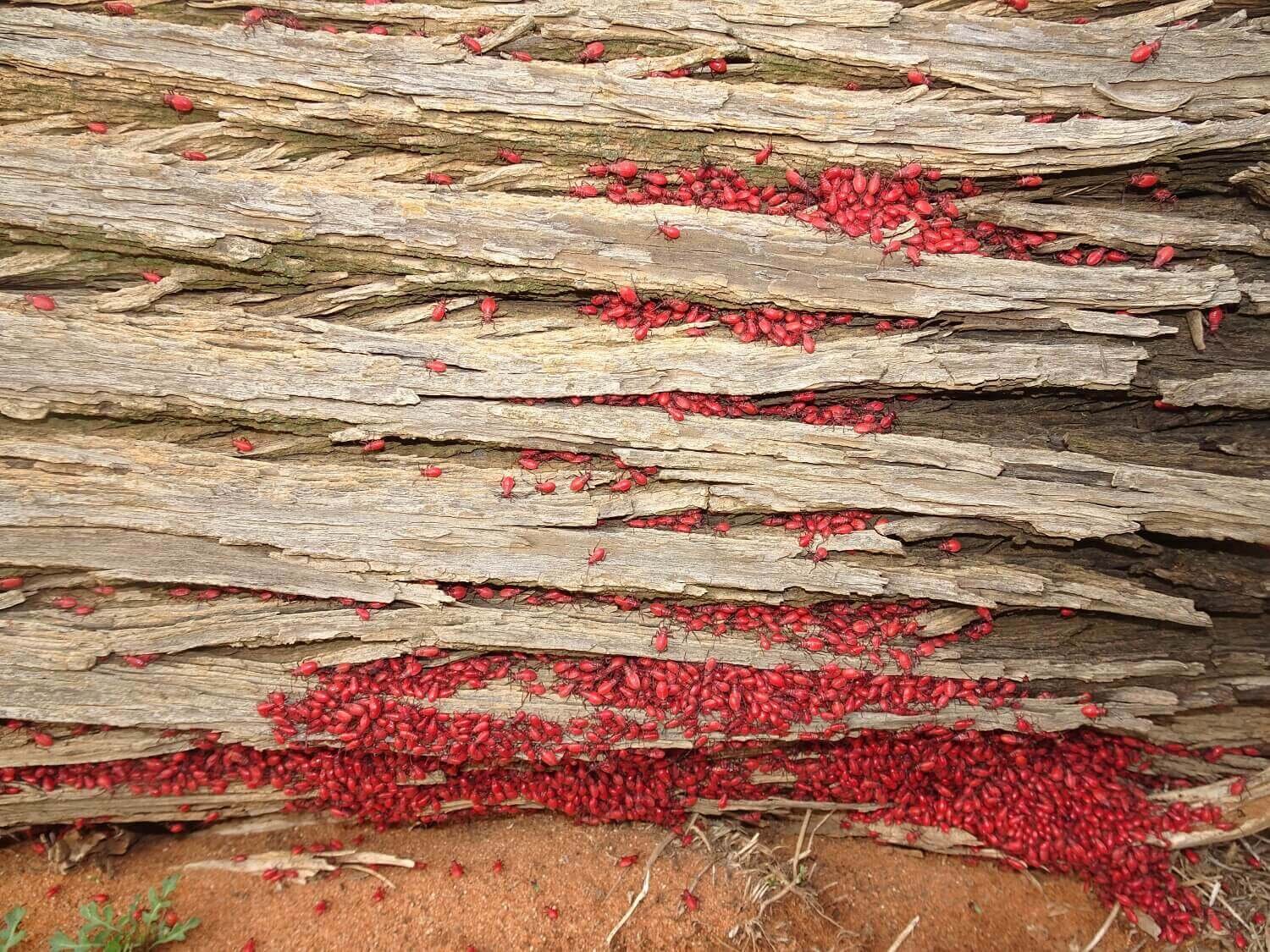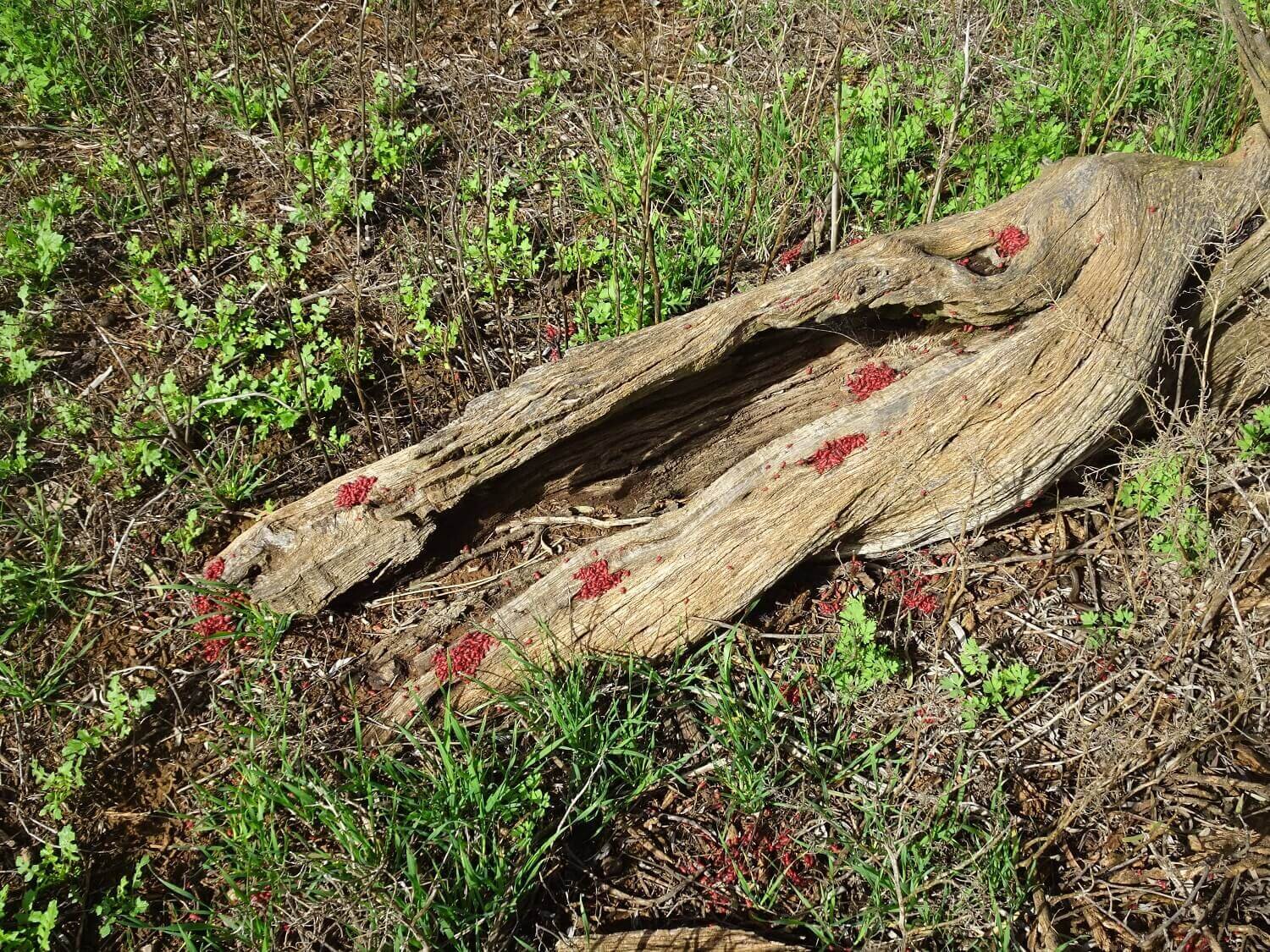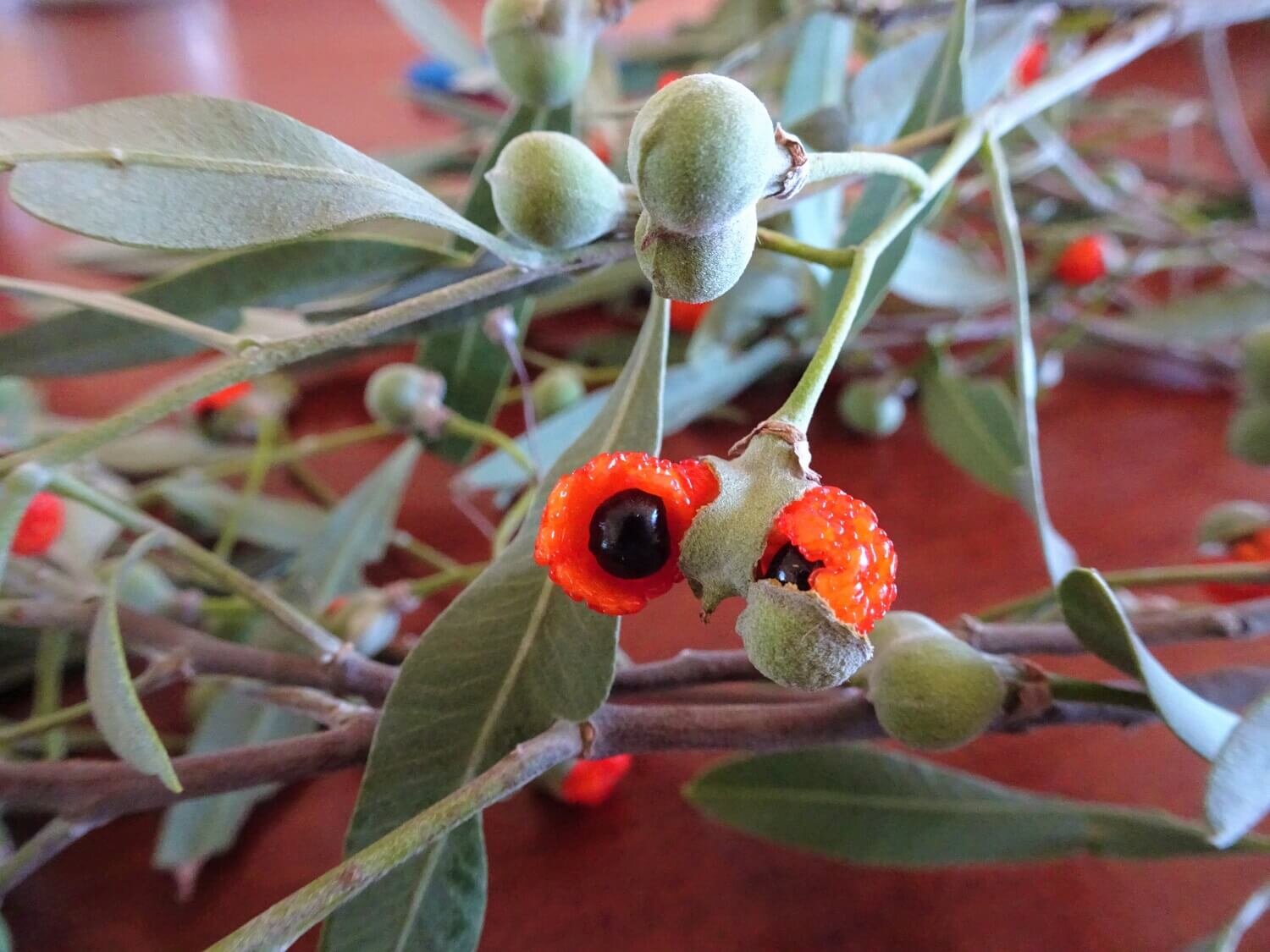Cattlebush and Red-eyes Bugs
The strangest addition to my seed collection this year was Cattlebush (Alectryon oleifolius). Back in April we picked quite a lot of this weird looking seed. The fruit is just odd: one to four lobes that split open to reveal a glossy black seed half covered by a fleshy, red aril.
Cattlebush is a small tree with many common names: Rosewood, Bullock Bush, Boonaree. It is widespread across inland Australia but is very tasty to livestock, goats and rabbits so you don't often see small plants in the landscape. The plants you do see are often old, really old; possibly more than 100 years. Apparently, some individuals in photographs from the 1940s look the same today (1).
Returning Cattlebush into the landscape is difficult (2). Germination is variously reported to be tricky or easy (3), however, all agree the growth rate of seedlings is painfully slow. Restoring arid areas is really playing the long game. Much to my surprise, I achieved over 80% germination with fresh seed (<3 months old). I removed the red aril and sowed them into coarse sand and potting mix and kept the pots on a heat mat. I’m not sure when they’ll be ready to plant out though. Aside from growing and planting tube stock (direct seeding is not recommended), some good results have been achieving by damaging roots to stimulate the growth of root suckers around parent plants.
VicFlora says "Fruiting of this species is irregular in Victoria with occasional 'mast' years and other years where virtually no fruit are produced across the range." 2021 was a mast year with abundant seed dripping from the trees. But it seems Cattlebush doesn’t really keep a soil seed bank. Seed viability may decline rapidly and lots of seed can be destroyed by insects (3). Research by Kate Callister found that only 2% of seed collected in 2001 was viable and she was unable to get any Cattlebush to germinate from the collected seed. Cattlebush did not germinate from the soil either (4).
So when I found this bug nursery in a Cattlebush woodland, I wondered. Turns out that these are instars of Red-eyes Bugs (Leptocoris mitellatus). These bugs are seed-predators of plants in the Sapindaceae family so they’ll be after the Cattlebush seed. They can form aggregations in the thousands!
The adult bugs use their long beaks to pierce the seed coat and inject digestive substances into it. Then they suck up and consume the digested seed material, leaving us with nothing but a seed shell. There are five species of Leptocaris bugs in Australia and you’d need to examine their genitals to distinguish them … I didn’t do that. The other four species primarily occur in the rainforests, so I guessed this was the southern L. mitellatus. Interestingly, Cattlebush appears to be the only host. Hopbush (Dodonaeae) are also in the Sapindaceae family, but they appear not to be a host (5).




First published on 4 August 2021
More information:
Significant flora factsheet - https://www.landscape.sa.gov.au/saal/plants-and-animals/native-plants-and-animals/native-plants
Duncan et al. (2019) Lower dormancy with rapid germination is an important strategy for seeds in an arid zone with unpredictable rainfall https://www.ncbi.nlm.nih.gov/pmc/articles/PMC6736279 and thesis here https://majorprojects.planningportal.nsw.gov.au/prweb/PRRestService/mp/01/getContent?AttachRef=DA251-09-01-PA-3%2120210127T005453.362%20GMT
Wisniewski and Parsons (1986) Regeneration of Heterodendrum in arid south-eastern Australia https://www.biodiversitylibrary.org/page/59150566#page/333/mode/1up
Callister et al. (2018) An investigation of the soil seedbank and seed germination of perennial species in Belah (Casuarina pauper) woodlands in north-west Victoria. https://www.researchgate.net/publication/325496634_An_investigation_of_the_soil_seedbank_and_seed_germination_of_perennial_species_in_Belah_Casuarina_pauper_woodlands_in_north-west_Victoria
Carroll et al. (2005) Ecology of Leptocoris Hahn (Hemiptera: Rhopalidae) soapberry bugs in Australia. http://soapberrybug.org/_dbase_upl/Carroll_Ecol_2005.pdf




